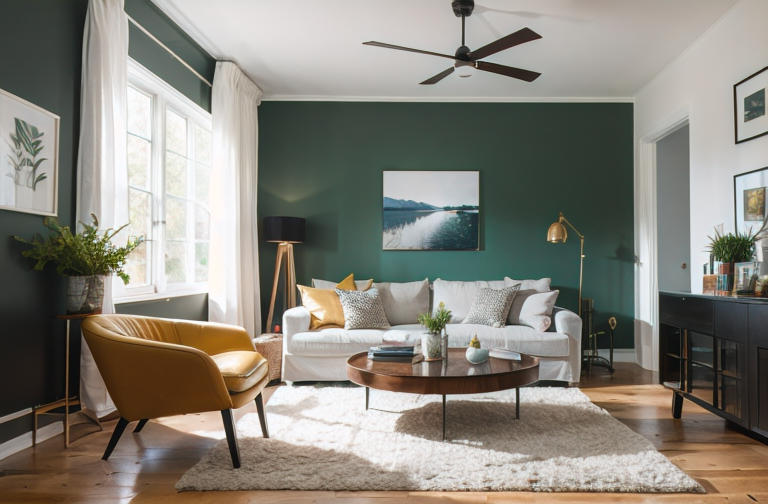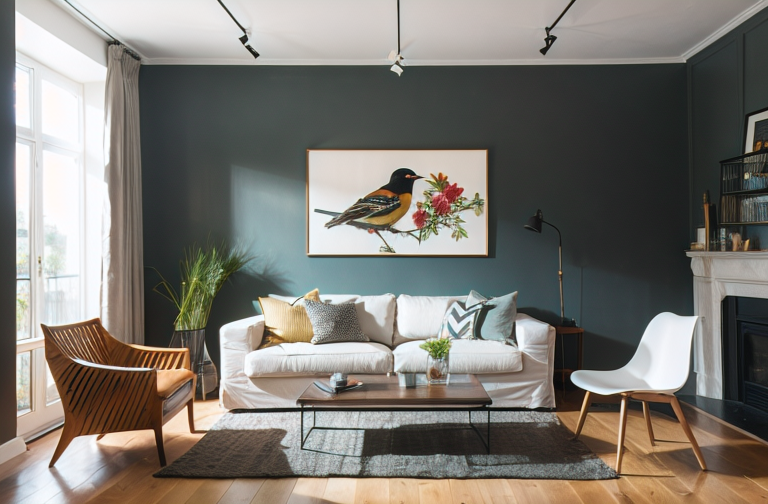Art Deco Design: Understanding its Influence, Characteristics, and Implementation

Art Deco, popular in the 1920s and 1930s, combines creativity, culture, and technology, highlighted by contrast and self-expression. Influenced by designers like Mackintosh and Wright, its characteristics include geometric lines and polished finishes.
Introduction to Art Deco Style
Emerging around 1908, the Art Deco style quickly gained popularity, heralding a new era in the creative world. Peaking in the 1920s and 1930s, this particular style was a true reflection of the times—a potent mix of artisanship and technology. An aesthetic departure from the Victorian austerity, Art Deco made a bold statement of style, sophistication, and cultural progress.
Emergence and Popularity
Think: the glittering glitz of the Roaring Twenties, the hush hush speakeasies, the Jazz Age! This style reflected the era’s optimism and a move towards a more prosperous modern world. Quite like the way the white house interior design style has shaped our perception of classic American elegance.
Purpose and Expression
Art Deco wasn’t just ornamental—it brought together beauty and function cohesively. Its purpose was wrapped up in its expression, mirroring a society that was starting to revel in technological advancements, cultural progress, and an appetite for the visually stimulating.
Transition from Victorian Austerity
Remember the restrained opulence of the Victorian era? The Art Deco style disrupted this quaint austerity. It was grand, stylish, and an unapologetic celebration of a rapidly changing world. This movement wasn’t just a visual feast, it was a space where creativity traversed borders and created a unique blend of form and functionality.
The Art Deco movement may no longer be the new kid on the block, but its unmistakable flair continuesto permeate modern design landscapes. With its roots dug deep into the soil of cultural and technological fervor, it remains a testament to a bygone era of uninhibited glamour and sophistication, a reminder of a time when the world embraced change with open arms and a celebratory cheer.

Influential Figures in Art Deco Design
As an admirer of various artistic movements, I’ve always been captivated by the Art Deco era. Some notable personalities truly defined this time, shaping the design world with their innovative vision and unique style. After all, the core aesthetic of Art Deco didn’t emerge from nothing. It was shaped by remarkable designers such as Charles Rennie Mackintosh, Josef Hoffman, Adolf Loos, and Frank Lloyd Wright 🎨.
Popular Designers in the Art Deco Era
Reflecting on this time, other eminent figures come to mind. Émile Jacques Ruhlmann, René Lalique, Le Corbusier, Jean Dunand, and Etré were significant players who took Art Deco to new heights. Each had their own distinct contribution that pushed boundaries and transformed the interior design of white house and other prominent spaces.
Their Contributions to the Art Deco Style
The aesthetic of the Art Deco style was heavily influenced by their creations. From geometric shapes and bold lines, to luxurious materials and strong colors, each of these artists brought something unique to the table. They didn’t just follow the current trends, they set them. Each of their contributions helped to form the core aesthetics that are recognized as Art Deco today.
Lasting Legacies in Modern Design
While these designers were rooted in their time, their influence extends to modern day design. I see their lasting legacy in the symmetry, rich color palettes and decadent details that still resonate in contemporary interior design. They made a mark in the history of design and their contributions continue to influence designers all over the world, including myself. Truly, their timeless designs are a testament to the lasting impact of the Art Deco era.

Defining Characteristics of Art Deco Design
Isn’t Art Deco just fascinating? I’ve always been intrigued by its visionary charm. Let me share some essential features I’ve observed over the years.
Geometric Lines and Shapes
Art Deco is an enigma composed of geometric lines that dance together in great unison. Picture this: you walk into a room and are instantly captivated by an ensemble of solid colors and polished finishes. Those sharp intersecting lines and stylized shapes are a signature element that sets Art Deco apart. Such audacity in structure is why white house interior design looked absolutely phenomenal in an Art Deco style during the roaring 20s.
Use of Monochromatic Palettes
Another intrinsic attribute of Art Deco design is its use of monochromatic palettes. There’s something irresistibly sophisticated about a room decked in hues of a single shade. Whether it’s an audacious red or a calming blue, the effect is always stunning. I’ve often toyed with the idea of having an entire room design centralized around one bold color. It’s a perfect example of how less can truly be more.
Influences from Industrial Revolution and Cultural Motifs
What makes Art Deco even more charming is its roots. Dating back to the Industrial Revolution, this design approach taps into cultural motifs and technology inspired aesthetics. In my experience, this revolutionary era had a profound influence on shaping the modernity of Art Deco. The architectural elements borrowed from different cultures peppered with pieces straight out of the industrial age is a nostalgic homage to the past while celebrating the future.
Isn’t it fascinating how each design movement tells a unique story? Just like Art Deco, where every line, color, and shape unfolds a tale of audaciousness and elegance.

Commonly Used Materials in Art Deco Interiors
In the world of Art Deco interiors, the materials utilized often speak volumes about the design aesthetic. Reflecting the opulence of the era, a diverse array of polished woods is incorporated, including Maccassar, Burl Walnut, and Zebrano. Much like the variegated spectrum of hues in the interior design of the white house, these exquisite woods are polished to a high sheen, their brilliant colors adding to the luxurious vibe of the space.
The Appeal of Marble and Metal
Art Deco style makes extensive use of marble and metal, a nod to the industrial advancements of the era. The elegance of marble, combined with the modern sheen of aluminium and chrome, provides a harmonious blend of luxury and modernity. These materials, despite their contrasting characteristics, feed into the magnificent balance between form and function that I so deeply appreciate.
The Use of Mirrors, Glass, and Luxurious Textiles
Mirrors and glass hold a significant place in the Art Deco aesthetic, their reflective surfaces adding a touch of brilliance and drama. Meanwhile, opulent textiles lend a plushness to the interiors. The textures and patterns of these luxurious fabrics tell their own unique story, painting an image of lavish style and sophistication.
From the enchanting interplay of different materials to their seamless blending in a room, Art Deco design offers a rich sensorial experience. More than a mere style, it is an embodiment of an era marked by luxury, innovation, and a celebration of material diversity.
Implementation of Art Deco Design in Interior Design
As a devotee of the majestic symmetry and plush elegance embraced by the Art Deco style, I wholeheartedly champion its usage in interior design. Intricate, inartificial, and innovative, Art Deco gracefully marries form and function.
Furniture and Decoratives
Diving headfirst into the Art Deco world, one immediately notices its defining feature ornate furnishings. Heavily influenced by antique cabinets and laminates, Art Deco capitalizes on an eclectic mix of materials, lending a unique character to every piece. Sprinkling a few Art Deco inspired pieces in a space can effortlessly encode glamour, creating an ambiance reminiscent of the 1920s’ extravagant existence. And yes, this is akin to the white house interior design style.
Light Fixtures and Flooring
The Art Deco era splashed the canvas of interior design with distinctive light installations, like pendant lights, that emit a warm gleam reflecting off vinyl plank floors. Creating a sensuous luminosity and depth to spaces, Art Deco lighting complements the symphony of custom designed furniture pieces, echoing the dapper sophistication of rooms like those found in the interior design of white house.
Features in Homes and Buildings
Original architectural attributes reflecting the Art Deco style include stunning geometric cornices, ostentatious entrance halls, and sleek onyx and marble en suite bathrooms, all nodding to the intrinsic glamour that the white house interior design also encapsulates. It is this strategic blend of dramatic elements and luxurious detailing that carves a niche for Art Deco in the world of interior design, distinctly visible in the interior design of the white house.
Art Deco, with its echoes of lavish opulence and geometric grandeur, continues to inspire an enduring style narrative in modern interiors, shaping spaces that pulsate with charismatic charm and vibrancy, akin to that of the White House.
- Unlocking the Intricacies of Interior Design: Ranch-Style Homes and the Pursuit of Functionality
- Blending Tradition and Modernity: Exploring the Design of Nipa Hut and Trynagoal Tea House
- Enhancing Dining Experiences through Creative Interior Design and Rebranding in Burger Restaurants
- Mastering Home Renovation: The Crucial Roles of an Interior Designer and Effective Budget Management
- Understanding the Value of Interior Designers: Roles, Benefits, and Selection Process
- Exploring the Richness of Turkish Architecture and Interior Design through Adobe Stock and Pinterest
- Unveiling the Unique Characteristics and Design Elements of Ranch-Style Houses
- Embracing Openness and Personal Touch: The California Ranch House Interior Design Concept
- Embracing Warm Minimalism: The Rise of Brown Tones in Interior Design
- Enhancing Your New Home: Key Elements and Strategies in Interior Design
- Unveiling the Art of Luxury Interior Design: Exploration of Materials, Individual Style and Inspiration from Pinterest
- 13 Easy and Affordable Tips to Spruce Up Your Home Decor
- Exploring the Rich History and Distinctive Features of Tudor Architecture
- Exploring British Home Interiors: From Historical Evolution to Modern Adaptation
- Traversing the World of Interior Design: From Designer Profiles to DIY Ideas and Future-ready Furniture
- Contemporary Home Refinement: Leveraging Exposed Brick Design and Affordable, High-Quality Furnishings
- Exploring the Warmth and Charm of Modern Rustic Interior Design
- Enhancing Duplex and Triplex Interiors: An In-Depth Guide to Style, Lighting, and Effective Use of Space
- Creating Your Dream Bathroom: A Comprehensive Guide to Designs, Functionality, and Material Selection
- Creating Your Personal Spa: Insights into Modern Bathroom Design Trends



